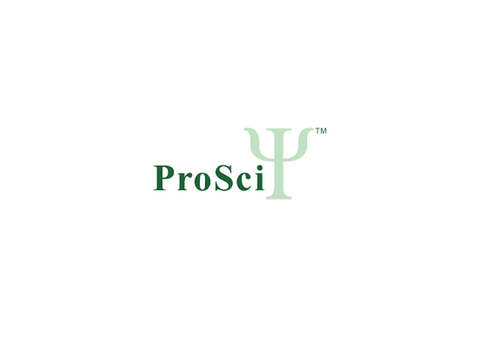Product Description
HOXB8 Antibody | 25-316 | ProSci
Host: Rabbit
Reactivity: Human
Homology: N/A
Immunogen: Antibody produced in rabbits immunized with a synthetic peptide corresponding a region of human HOXB8.
Research Area: Transcription, Cancer
Tested Application: E, WB
Application: HOXB8 antibody can be used for detection of HOXB8 by ELISA at 1:312500. HOXB8 antibody can be used for detection of HOXB8 by western blot at 1 μg/mL, and HRP conjugated secondary antibody should be diluted 1:50, 000 - 100, 000.
Specificiy: N/A
Positive Control 1: Cat. No. XBL-10413 - Fetal Skeletal Muscle Tissue Lysate
Positive Control 2: N/A
Positive Control 3: N/A
Positive Control 4: N/A
Positive Control 5: N/A
Positive Control 6: N/A
Molecular Weight: 27 kDa
Validation: N/A
Isoform: N/A
Purification: Antibody is purified by peptide affinity chromatography method.
Clonality: Polyclonal
Clone: N/A
Isotype: N/A
Conjugate: Unconjugated
Physical State: Liquid
Buffer: Purified antibody supplied in 1x PBS buffer with 0.09% (w/v) sodium azide and 2% sucrose.
Concentration: batch dependent
Storage Condition: For short periods of storage (days) store at 4˚C. For longer periods of storage, store HOXB8 antibody at -20˚C. As with any antibody avoid repeat freeze-thaw cycles.
Alternate Name: HOXB8, HOX2, HOX2D, Hox-2.4
User Note: Optimal dilutions for each application to be determined by the researcher.
BACKGROUND: HOXB8 belongs to the Antp homeobox family. It is a nuclear protein with a homeobox DNA-binding domain. This gene is included in a cluster of homeobox B genes located on chromosome 17. The protein functions as a sequence-specific transcription factor that is involved in development. Increased expression of this gene is associated with colorectal cancer. Mice that have had the murine ortholog of this gene knocked out exhibit an excessive pathologic grooming behavior. This behavior is similar to the behavior of humans suffering from the obsessive-compulsive spectrum disorder trichotillomania.This gene is a member of the Antp homeobox family and encodes a nuclear protein with a homeobox DNA-binding domain. It is included in a cluster of homeobox B genes located on chromosome 17. The encoded protein functions as a sequence-specific transcription factor that is involved in development. Increased expression of this gene is associated with colorectal cancer. Mice that have had the murine ortholog of this gene knocked out exhibit an excessive pathologic grooming behavior. This behavior is similar to the behavior of humans suffering from the obsessive-compulsive spectrum disorder trichotillomania.
 Euro
Euro
 USD
USD
 British Pound
British Pound
 NULL
NULL














![Mouse Hoxb8 Antibody (C-term) [APR31357G] Mouse Hoxb8 Antibody (C-term) [APR31357G]](https://cdn11.bigcommerce.com/s-452hpg8iuh/images/stencil/500x659/products/871602/1163669/logo__92149.1659788186__20440.1659868129.png?c=2)